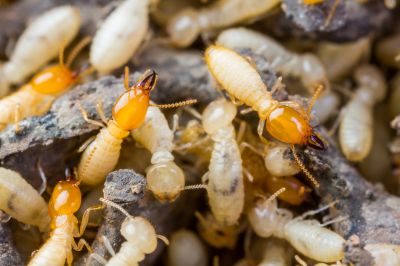Leading Products For Wood Insect Inspections To Ensure Property Safety
Choose from top-rated inspection equipment that provides precise detection of wood-infesting insects and damage.
 Detecting wood-infesting insects is a crucial step in maintaining the integrity of wooden structures, furniture, and other timber-based items. Proper inspection tools help identify early signs of infestation, such as tiny exit holes, frass deposits, or weakened wood, enabling timely intervention. These products range from handheld devices to more advanced inspection systems, each designed to assist users in thoroughly assessing wood for potential pest activity. Accurate detection not only helps prevent extensive damage but also informs appropriate treatment strategies. When selecting inspection products, it is important to consider ease of use, accuracy, and the specific type of wood or infestation risk involved.
Detecting wood-infesting insects is a crucial step in maintaining the integrity of wooden structures, furniture, and other timber-based items. Proper inspection tools help identify early signs of infestation, such as tiny exit holes, frass deposits, or weakened wood, enabling timely intervention. These products range from handheld devices to more advanced inspection systems, each designed to assist users in thoroughly assessing wood for potential pest activity. Accurate detection not only helps prevent extensive damage but also informs appropriate treatment strategies. When selecting inspection products, it is important to consider ease of use, accuracy, and the specific type of wood or infestation risk involved.
Top Overall Option
Multi-Function Wood Inspection Device
A versatile handheld inspection tool equipped with LED lighting, magnification, and a built-in mirror for comprehensive visual assessments. Designed for ease of use, it allows users to examine hard-to-reach areas and identify signs of infestation with clarity. Its durable construction and adjustable focus make it suitable for both professional and DIY inspections, providing detailed views of wood surfaces and hidden areas.
Types of Products For Wood Insect Inspections
Handheld Magnifying Glass
Provides magnification to closely examine wood surfaces for tiny exit holes and signs of pests.
LED Inspection Light
Illuminates dark or hidden areas of wood to reveal signs of infestation or damage.
Thermal Imaging Camera
Detects temperature variations in wood that may indicate pest activity or moisture issues.
Endoscope/Borescope
Flexible camera that allows inspection inside hollow or inaccessible wood areas.
Moisture Meter
Measures moisture levels in wood, as high moisture can attract pests.
Ultraviolet (UV) Light
Reveals pest residues or frass deposits that fluoresce under UV light.
Digital Pest Detector
Uses electronic sensors to identify pest activity within wood structures.
Acoustic Emission Detector
Detects sounds produced by active pests within wood, aiding in early detection.
Inspection Mirror
Helps view into tight or hidden spaces within wooden structures.
Chemical Spot Test Kits
Detects specific pest residues or signs of infestation through chemical reactions.
Popular Choices
Widely used for illuminating dark corners and hidden areas during inspections.
Commonly employed for detailed visual examination of wood surfaces.
Popular for inspecting inside hollow or inaccessible wood areas.
Frequently used to assess moisture content, which can indicate potential pest issues.
Chosen for non-invasive detection of temperature anomalies in wood structures.
Effective for revealing residues or signs of pests not visible to the naked eye.
Popular electronic device for detecting pest activity within wood.
Used for early detection by listening for pest sounds within wood.
Helpful for viewing into tight or hidden spaces during inspections.
Often selected for quick chemical-based detection of pest residues.
Many inspection tools utilize different technologies, including magnification, light sources, or even thermal imaging, to enhance visibility into hard-to-see areas. Some devices are designed for quick visual checks, while others provide detailed analysis to pinpoint hidden pests. For professionals and homeowners alike, choosing the right inspection product depends on the scope of the inspection, the level of detail required, and budget considerations. Investing in quality inspection tools can lead to more accurate assessments, reducing the risk of overlooking early signs of infestation.
Effective wood insect inspection products are versatile and can be used in a variety of settings, from residential homes to commercial buildings, and even in furniture restoration projects. Regular inspections with reliable tools can help detect issues before they become costly repairs. Whether you are a pest control professional, a carpenter, or a homeowner, understanding the features and capabilities of these products ensures you select the most suitable option for your specific needs. Proper use of these tools, combined with knowledge about wood pests, can significantly improve the chances of early detection and intervention.
Key Buying Considerations
- Type of technology used and its suitability for your inspection needs
- Ease of use and ergonomic design for comfortable handling
- Level of magnification or illumination provided
- Portability and size for inspecting various locations
- Durability and build quality for long-term use
- Battery life or power source for cordless operation
- Compatibility with other inspection tools or accessories
- Ability to access hard-to-reach or concealed areas
- Accuracy and clarity of the visual or sensor data
- Cost relative to features and intended frequency of use
- Availability of additional features like adjustable focus or multiple light modes
- Ease of maintenance and cleaning
- Compatibility with existing safety gear or inspection protocols
- Customer reviews and reliability of the device
